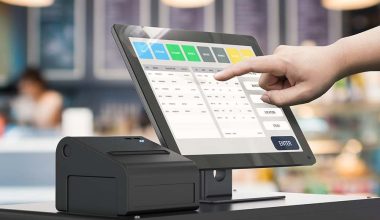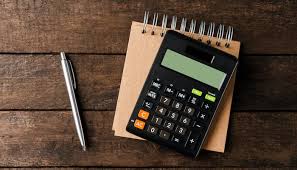In Nigeria, having a bank account is necessary. However, understanding the various types of bank accounts available to you is the most important thing. The availability of options allows you, as a customer, to choose from a variety of options that meet your immediate financial needs. Here, we will look at the most common types of bank accounts in Nigeria.
What Is An Account?
A specific record within a company’s financial ledger or balance sheet is referred to as an account. Accountants, finance professionals, and bookkeepers can utilize accounts to record critical financial information, such as reporting daily transactions to verify the exact amount of money a company has at any one time.
For example, if a business made a sale, the figure in its income account, or the account in which businesses record revenue, would rise. If the corporation purchased something, the additional cost would be reflected in an expense account. These several accounts assist businesses in remaining organized and aware of their spending and earning activities.
Businesses typically utilize a variety of accounts to keep track of their financial information and current value. Asset, expense, income, liability, and equity accounts are examples of these. You can utilize each account for a different purpose and keep track of them all in your financial ledger or balance sheet.
Types Of Bank Accounts In Nigeria
Here are some of the most common types of bank accounts in Nigeria:
#1. Savings account
In Nigeria, the most frequent type of bank account is the savings account. Because it is mostly used for deposits and withdrawals, it is limited to a few other transactions. A savings account, for example, has a lower interest rate than other account kinds. You don’t need much money to create a savings account.
Savings Account Fundamentals
A savings account is a bank account where you can keep money that you don’t intend to spend right away. Most savings accounts pay interest on deposits, albeit the interest rate and annual percentage yield (APY) vary greatly between banks.
Savings accounts, like checking accounts, may have minimum balance requirements and monthly maintenance costs. However, they normally do not come with a debit or ATM card, and they cannot be used to write cheques.
This is because savings accounts aren’t intended for day-to-day spending or bill payment. Normally, federal Regulation D limits your withdrawals from a savings account to six per month. These limits have been suspended indefinitely in order to make savings more accessible to persons who may be experiencing financial difficulties as a result of the coronavirus outbreak.
However, you should be aware that your bank may still charge you a fee if you withdraw more than six times a month from your savings account. This is known as an excess withdrawal fee, and banks can charge it for each transaction that exceeds the six-per-month limit.
Choosing a Savings Account
Consider which form of savings account is appropriate for you if you want to start one to save money for short- or long-term goals. Traditional bank standards or basic savings accounts can yield interest, but you’re more likely to pay a monthly charge if you create one of these accounts at a traditional bank.
In contrast, an online bank may charge lower costs and give better rates to savers. Depending on the bank, high-yield savings accounts, for example, frequently provide an APY that is much greater than the national savings APY.
If you can receive a better APY at an online bank, the convenience of having access to a branch may be worth it. Pay attention to costs and minimum balance limitations when you compare different savings choices and the APY you could receive.
#2. Current Account
This form of bank account is ideal for company owners because it allows for unlimited transactions. A savings account varies from a current account in that it usually has a daily limit, such as 500,000 naira as the maximum transaction limit.
A chequebook is also supplied to the account owner when they open a current account.
#3. Fixed Deposit Account
As the name implies, this account is for fixed deposits, which are deposits that you cannot withdraw until a certain length of time has passed. This is normally 30 days minimum and 180 days maximum. You can find out how to determine the fixed deposit interest rate in Nigeria by reading this post.
Corporate individuals utilize this account in the hopes of earning income on particular funds put in the fixed account.
#4. Joint Account
Of course, a joint account is one that has two or more owners. Each of these people will be a signatory, which implies that no one can make a decision without the knowledge of the other signatories. Joint accounts are widely classified as either joint tenancy for couples or tenants-in-common for business partners.
#5. Domiciliary Account
This is a foreign currency account that is ideal for international transactions. Holders of this account type reap numerous perks when conducting foreign business.
#6. Corporate account
Businesses, organizations, or large corporations are typically the ones to open a corporate account. It is solely for commercial interests.
#7. Non-Resident Nigerian Account
This type of account is for Nigerians living abroad. Several Nigerians want to operate a Nigerian bank account for various reasons, hence this innovation.
Types of Accounts In Accounting
While there are several types of accounts, most businesses rely on the following to measure their spending, revenues, and overall profit. Here’s a closer look at the various Types of accounts in accounting:
#1. Assets
Asset accounting often include both tangible and intangible assets owned by your organization. For example, your company may have tangible assets such as laptop computers and intangible assets such as design patents. You might also include the following items in your assets account:
- Vehicles: Because they are real instruments that your firm utilizes, company cars and other vehicles are tangible assets.
- Machinery or equipment: Because they are actual objects, company-owned machinery or equipment can also be considered tangible assets.
- Property or buildings: Because they are physical spaces or structures, company property or buildings are considered tangible assets.
- Copyrights: Because they are intellectual property, copyrights are intangible.
- Logo: another intangible asset is a company’s logo, which is part of the company’s brand image and may impact how consumers perceive its products or services.
- Trademarks: Trademarks are intangible assets that can be included alongside your tangible assets because they are non-physical safeguards that restrict others from utilizing the company’s logo or brand qualities.
#2. Expenses
An expense account can include the products or services that a business purchases to generate additional revenue. Purchasing items or services to increase the productivity of its manufacturing or distribution activities is one example. Other costs could include:
- Employee wages
- Marketing expenses
- Facility expenses
If a firm travels or makes donations, both can be included in its expense account. However, in order to keep proper financial business records, personal spending should not be included in the company expense account.
#3. Income
Income, or revenue accounts, track how much money a company makes from selling its goods or services. These accounts can also include dividends that a company earns through investments. However, it is critical to record the real investments in an asset account. An income account is essentially where businesses keep track of their earnings.
#4. Liabilities
Outstanding debts, payment commitments to creditors, and other anticipated payments can all be seen in a company’s liabilities account. Here are some concrete examples of what a liability account might contain:
- Loans for businesses
- Utility bills that are past due
- Excessive facility maintenance costs
- Overdrafts on accounts
Other liability charges that apply to a company’s specific operations may also be documented. It is critical to incorporate any possible interest fees while recording these costs to ensure that the organization is always aware of its present liabilities.
#5. Equity
Equity accounts reflect the value left in a company’s assets after deducting its total liabilities to represent the company’s current worth. Create a balance sheet with an exhaustive breakdown of everything the company owes and possesses to determine the worth of an equity account.
The balance sheet can then be used to subtract the company’s total liabilities from its total assets. This allows you to grasp the company’s present equity level and value, which can help you decide how to raise its worth.
Which Type Of Account is Loan?
The company keeps a separate account for each individual and organization in order to determine the sum owed to or due from them. As a result, a bank loan account is a personal account.
What is a T Account?
A T-account is a graphical representation of a general ledger that tracks the transactions of a firm. It is made up of the following components: A title for an account at the top horizontal line of the T. On the left is the debit side.
What Type Of Account Is Cash?
A cash account is a type of asset account used in accounting to record a company’s cash and cash equivalents. A cash account is often used to record the entry and outflow of cash in the operations of a business, such as cash received from the sale of goods or services and cash paid out for expenses.
Is Cash A Debit Or Credit?
Receiving cash in a commercial transaction would be recorded as a debit entry because it increases the quantity of available finances for the corporation. Paying away cash, on the other hand, would be recorded as a credit entry because it reduces the amount of accessible funds.
What Is Debit In Accounting?
A debit input increases the balance of an asset or expense account. A debit also reduces the value of a liability or equity account. As a result, a debit represents money entering an account. Debits are always recorded on the left side of the ledger as a positive number to indicate incoming funds.
What are The Two Methods Of Accounting?
There are two basic accounting methods: the cash method and the accrual method. A modified accrual technique, which is a blend of the two major approaches, is an alternate bookkeeping method.
What Credit in Accounting?
A credit is an entry in personal banking or financial accounting that shows that money has been received. Credits (deposits) are normally on the right side of a checking account register, and debits (money spent) are on the left.
Is Capital A Credit Or Debit?
On the credit side of an account, capital is recorded. Any rise is reflected on the credit side as well. Any decline is reflected on the debit side of the capital account in question.
Conclusion
Now that you have a better idea of the type of bank account that best suits your needs, it’s time to visit a bank and inquire about the necessary documentation.
Whether you have one bank account or ten, the most essential thing is to select accounts that are appropriate for your current financial situation.
If you have trouble budgeting, for example, a checking account that includes free budgeting tools could be a suitable option. Alternatively, if you intend to buy a property, you should consider opening a high-yield savings or money market account to hold the funds you’ll need to seal the deal.
Remember to evaluate the features and charges of your bank account on a frequent basis. If your needs change, consider switching to a new bank if you can find a better deal elsewhere.
- EXPENSE ACCOUNT: Definition, Types, Purpose and Guide
- Top 15+ Service Business Ideas in Nigeria
- Top 10+ Most Successful Businesses to Start in Nigeria 2023
- BUSINESS BANKING ACCOUNTS: An Entrepreneurial Guide to Business Accounts






